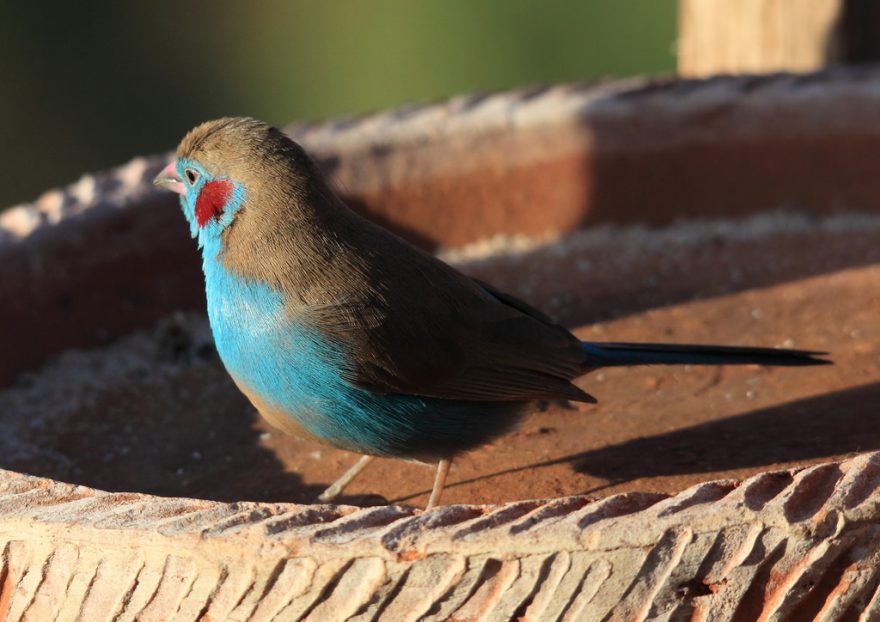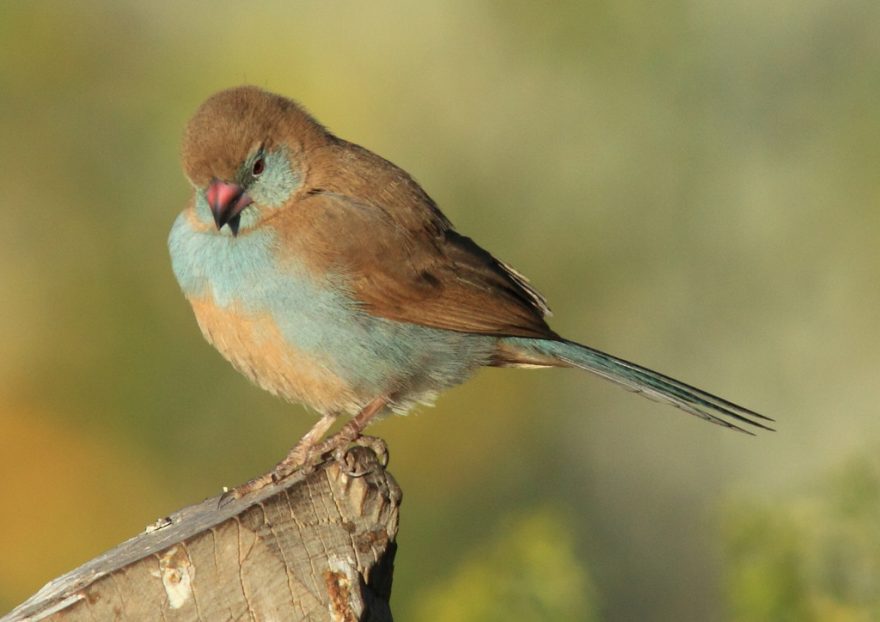Cordon’s are among the most charming exotic finches available in Australian aviculture. After zebras, Gouldians and stars; Cordons were the fourth species I added to my collection when I first started keeping finches.
Repeated failure
That pair of birds vexed me for years. They proved to be a compatible pair, but when the first breeding season came along they laid nest after nest of infertile eggs. Poor nutrition, the usual cause of infertility, was addressed by offering daily live food and adding commercial finch soft foods into their diet. Come autumn, they attempted to breed again. This time the chicks hatched, but were promptly tossed from the nest.
The following year went no better. Heeding the advice of some local breeders, I moved the cordons to a larger aviary with more hiding places and fewer birds sharing the environment. The chicks weren’t tossed this time, but the victory was short lived as the hen abandoned several clutches about a week before fledgling.

That winter I lost the hen to egg binding. She actually became egg bound several times, but recovered when moved to a heated hospital cage. On the third trip to the hospital cage she finally succumbed.
It would be easy to blame my husbandry for this death, but I don’t think there was much else I could have done for her. The drinking water had calcium additives, huge amounts of cuttlefish bone and shell grit were offered, nesting receptacles were removed to discourage breeding, and the aviary was insulted from the cold as well as possible.
The second attempt
As spring began to arrive, I passed my remaining cock bird on to another breeder and – undeterred from my goal of breeding them – purchased another pair of red-cheeked cordons.
The new pair were much too young to breed that year, so I had to wait until spring the following year (this year, actually) to attempt breeding. Following the advice of yet another accomplished breeder, I improved their diet further by feeding the mealworms nutritious organic kale and massively increased the amount of red pannicum seed added to their seed mix.

They were moved to an even larger aviary that provided nest sites that were completely hidden from view. Much to my surprise, their very first attempt at breeding was a success and they fledged three healthy young. As I write this, they’re already feeding their second nest of chicks.
Dot point conclusions
Closing thoughts
I’d like to say that my ever-evolving finch husbandry skills are primarily to thank for finally succeeding with this species, but given that I’ve had success with more challenging species, there’s a part of me that suspect my first cordon hen was just a really lousy parent.
Either way, hopefully you got some useful ideas from this article!
It might help to put society finches in with them, to help raise the hatchlings.
I have mine and with zebra finches is that okay?
They will struggle to breed in that situation, I think.
May I ask a question? I,ve had a pair of Cordon Bleus for about 1.5 years. The male picks at the females head. Is there any way I can stop this?